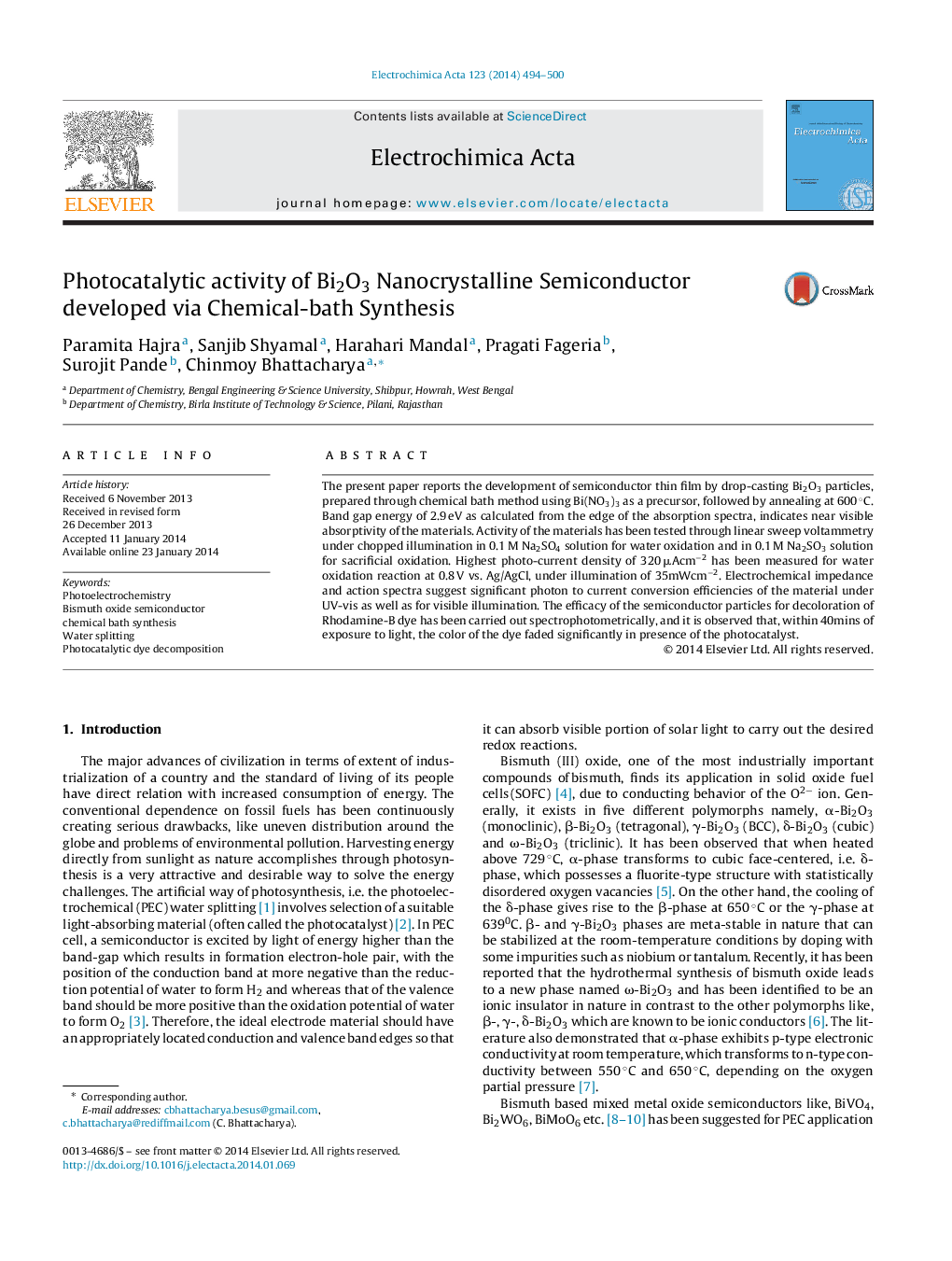| Article ID | Journal | Published Year | Pages | File Type |
|---|---|---|---|---|
| 186049 | Electrochimica Acta | 2014 | 7 Pages |
•Chemically synthesized Bi2O3 nanoparticles at 180 °C using simple Bi(NO3)3 as precursor salt.•High photoelectrochemical water oxidation performance: maximum photocurrent 320 μAcm−2 even at low illumination of 35mWcm−2; IPCE-32%; APCE-42%.•Significant visible light (λ > 420 nm) absorbing capacity of n-type Bi2O3 semiconductors.•XRD analysis confirms presence of α-Bi2O3 (monoclinic) and ω-Bi2O3 (triclinic) crystalline phases of average size 28 nm.•Significant photocatalytic activity of Bi2O3 particles through decoloration of Rhodamine B dye molecules.
The present paper reports the development of semiconductor thin film by drop-casting Bi2O3 particles, prepared through chemical bath method using Bi(NO3)3 as a precursor, followed by annealing at 600 °C. Band gap energy of 2.9 eV as calculated from the edge of the absorption spectra, indicates near visible absorptivity of the materials. Activity of the materials has been tested through linear sweep voltammetry under chopped illumination in 0.1 M Na2SO4 solution for water oxidation and in 0.1 M Na2SO3 solution for sacrificial oxidation. Highest photo-current density of 320 μAcm−2 has been measured for water oxidation reaction at 0.8 V vs. Ag/AgCl, under illumination of 35mWcm−2. Electrochemical impedance and action spectra suggest significant photon to current conversion efficiencies of the material under UV-vis as well as for visible illumination. The efficacy of the semiconductor particles for decoloration of Rhodamine-B dye has been carried out spectrophotometrically, and it is observed that, within 40mins of exposure to light, the color of the dye faded significantly in presence of the photocatalyst.
Graphical abstractFigure optionsDownload full-size imageDownload as PowerPoint slide
